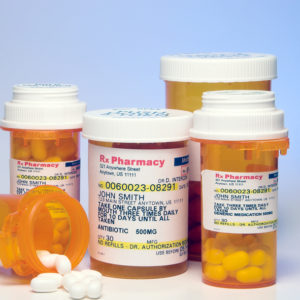Pharmacy benefit managers (PBMs) stand for lower drug costs and rely on the ability to negotiate with drug companies to bring down costs for employers, labor unions, and patients. While our industry stands in strong defense against drug company tactics or public policies that undermine the push for lower costs, if public policy allowed, there could be a number of ways to preserve the ability to achieve savings that go beyond the current prescription drug rebate system.
An outdated antitrust settlement has hemmed the market into using retrospective rebates as the main pathway to achieve savings on prescription drugs. Recently, the window to rebate reform opened with the introduction of the Restore Prescription Drugs Discount Act by U.S. Sen. Rand Paul (R-Ky.).
We support reforming the prescription drug rebate system to make drugs more affordable for all patients by adding options that improve flexibility in negotiating. Updating the law could allow for upfront discounts, which could lead to better ways to lower out-of-pocket costs for patients and a clearer understanding of the discounts for employers and everyone in the system.
At issue is the Robinson-Patman Act, enacted in 1936 and, more recently, litigated by drug companies and pharmacies. The lawsuit brought by pharmacies against drug companies in the 1990s changed the trajectory of drug price negotiations, forcing manufacturers to move away from negotiating upfront discounts on prescription drugs with PBMs. Today, there is too much perceived legal risk for drug companies to pursue upfront discounts.
By reexamining Robinson-Patman to allow for upfront discounts on prescription drugs, PBMs can expand the ability to lower drug costs by negotiating for either kind of discount, whichever delivers better savings and lower costs, or is preferred by PBMs’ clients (employers, health plans, and government programs). Upfront discounts may help patients enrolled in high-deductible health plans, whose plan design sometimes places the full cost of prescription drugs on them until they reach their deductible. Other plans base cost-sharing obligations on the list price of the drug, so upfront discounting would lower their patient obligations. These patients should benefit from rebates to help lower their out-of-pocket costs.
Reexamining Robinson-Patman could also provide employers with even more transparency into their drug costs, arming them with the data they need to evaluate spending and make changes that will benefit their employees. PBMs support and practice actionable transparency, enabling employers to make informed decisions on how best to manage their prescription drug costs. Our companies currently provide employers with transparency, including information on prescription drug rebates, pharmacy price concessions, and administrative fees.
The bottom line is that the PBM industry is at the table and ready for others to join us to explore new ways to pursue our mission of lower costs.
A discussion on rebate reform also allows us to clear up the facts: PBMs want lower list prices, not bigger rebates. The primary critics of the rebate system are the very drug companies that want to charge higher prices and don’t want to be forced to the negotiating table to have to lower their costs.
Any conversation about new ways to achieve savings should be grounded in the reality that drug prices are not correlated to rebates or discounts – drug companies alone set their prices. PBMs support lower list prices on all prescription drugs for every patient.
Specifically, rebates are not driving up the price of drugs and drug prices are not correlated to rebates, as clearly shown by a growing body of evidence and data. There is no consistent pattern to the changes in rebates on brand prescription drugs; some increased while others decreased. Most drugs have no rebates at all, including nine of the 10 prescription drugs with the highest price increases since 2018. The average price hike among the top 29 drugs in Medicare Part D between 2018 and 2023 with no rebates was 93 percent – with some price increases as high as 413 percent.
As the mechanism available today, rebates are an important way to achieve lower drug costs. As we look at changes that allow us to consider a different system, we should make sure to preserve the fundamentals: being able to negotiate discounts makes drug companies lower their costs and delivers savings for employers, unions, taxpayers, and patients. Our industry welcomes the opportunity to discuss new ways to deliver savings and lower costs.
Making prescription drugs more affordable should be everyone’s goal and reexamining the current rebate system we’re all forced to use is an excellent step in that direction. We stand ready to work with Congress on reviewing the Robinson-Patman Act and delivering prescription drug reform to patients that will make drugs more affordable and enhance transparency.


